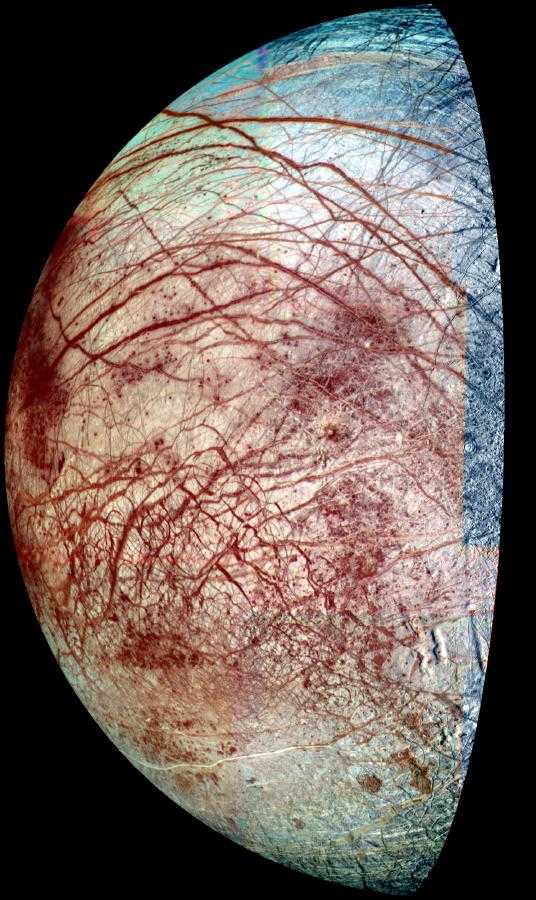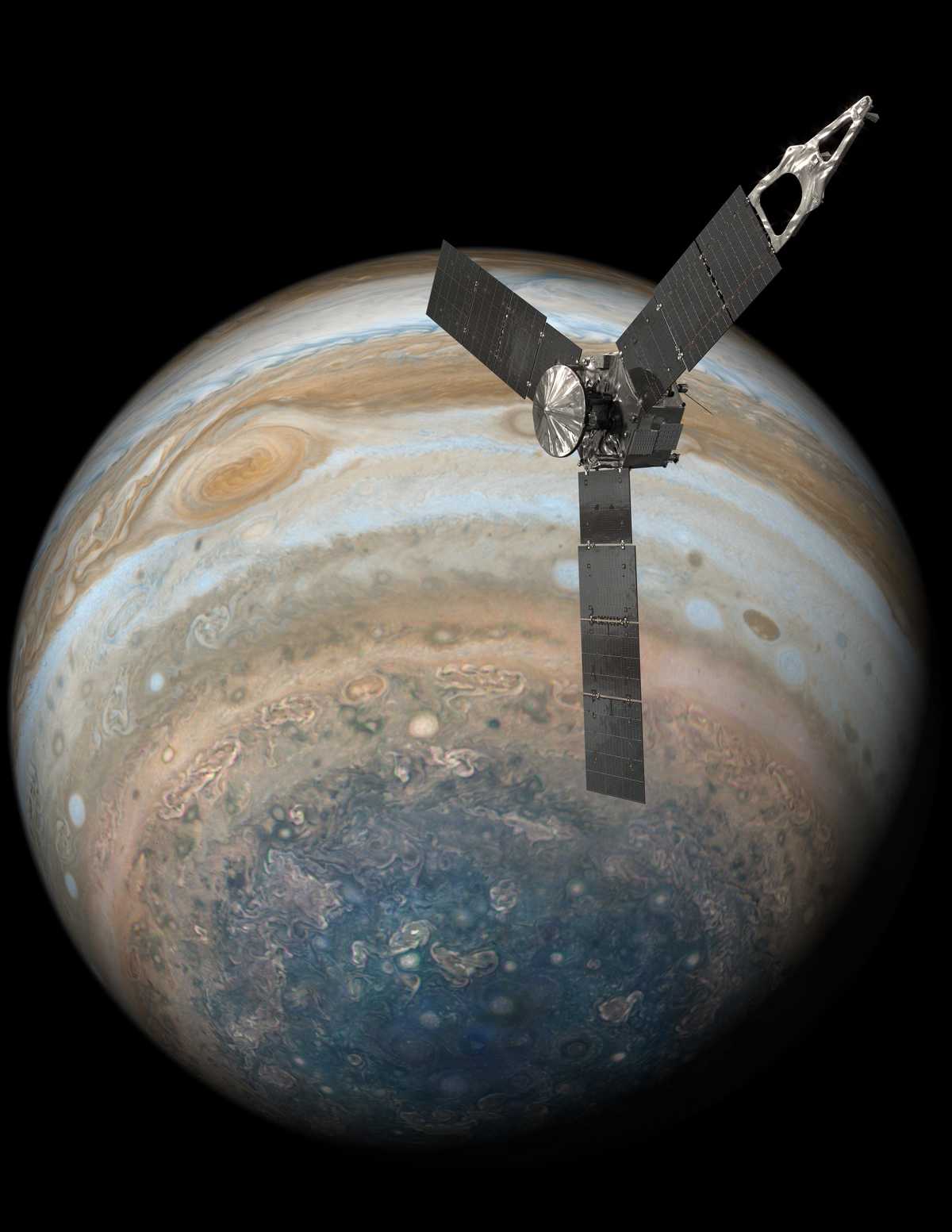NASA's Juno spacecraft has examined electrically charged oxygen and hydrogen molecules in the atmosphere of Jupiter's most interesting moon for potential life, Europa. According to a new study, these observations provide important data about the oxygen supply in the subsurface ocean.
“These results point directly to the potential for habitability in Europe.” said Juno mission principal investigator Scott Bolton (SwRI), co-author of the study. “This is the first direct in situ measurement of water components in Europe's atmosphere, and the data fall within a narrow range that could support habitability.”
In 2022, the Juno spacecraft passed within 352 kilometers of Europa. The spacecraft's JADE (Jovian auroral distributions experiment) instrument showed that large amounts of electrically charged oxygen and hydrogen molecules had escaped from the atmosphere.
“For the first time, we were able to clearly detect the presence of hydrogen and oxygen through in situ measurements and confirm that Europa's atmosphere is mainly composed of hydrogen and oxygen molecules.” said Robert Ebert, co-author of the study.
According to the researchers, the source of the particles is the water ice that forms the surface of Europa. Jupiter's powerful radiation breaks H2Bind O molecules, which leave behind oxygen and hydrogen. Heavier oxygen molecules tend to bind to the surface or near-surface atmosphere, while lighter hydrogen escapes into the atmosphere and beyond. The oxygen produced in the ice either disappears from the atmosphere or sticks to the surface. The remaining oxygen in Europa's ice could enter the subsurface ocean and serve as an energy source for potential metabolism.
“Europa's ice shield absorbs radiation and protects the subsurface ocean. During this process, oxygen is released into the ice, so the ice shield is in some ways Europa's lungs, providing a potential source of oxygen for the ocean. “Europa's ice shield is a potential source of oxygen for the ocean,” said Jami Salai, a researcher at Princeton University, the author. The main study: “We have been able to determine fairly accurately the total oxygen production in Europe, which is currently around 12 kg/s. Pre-Juno estimates ranged from a few kilograms per second to more than 1,000 kilograms. “The results clearly show that oxygen is being produced continuously at the surface, but much less than we expected.”

“We designed the JADE instrument to measure the charged particles that produce Jupiter's aurora.” “Flying by Europa was not part of Juno's primary mission,” said Frederic Allegrini, co-author of the study. “JADE was designed to operate under strong radiation, but not necessarily in Europa's environment, which is constantly exposed to strong radiation. However, it performed beautifully.”
Thanks to the new measurements, we already know Europe and its surroundings better, and open new paths towards newer, more precise observations. For example, a new estimate of the amount of oxygen produced on Europa's surface may be useful for studying the subsurface ocean and its potential habitability. Thanks to these observations, we already know the ratios of electrically charged particles near Europa, so we can also learn about the complex interactions between the Moon and its immediate environment.
“Europa is a magnificent celestial body. Researchers are quite certain that its interior hides a liquid ocean,” Ebert said. “Water is an important condition for life and can be found on or in a wide variety of celestial bodies. “Europe is a good place to look for water in the solar system.”
Report results Technical material It was published in the Journal of Natural Astronomy.
source: SWRI
comment












































